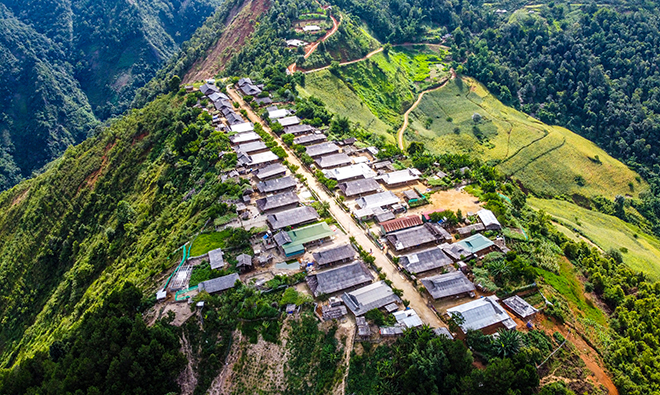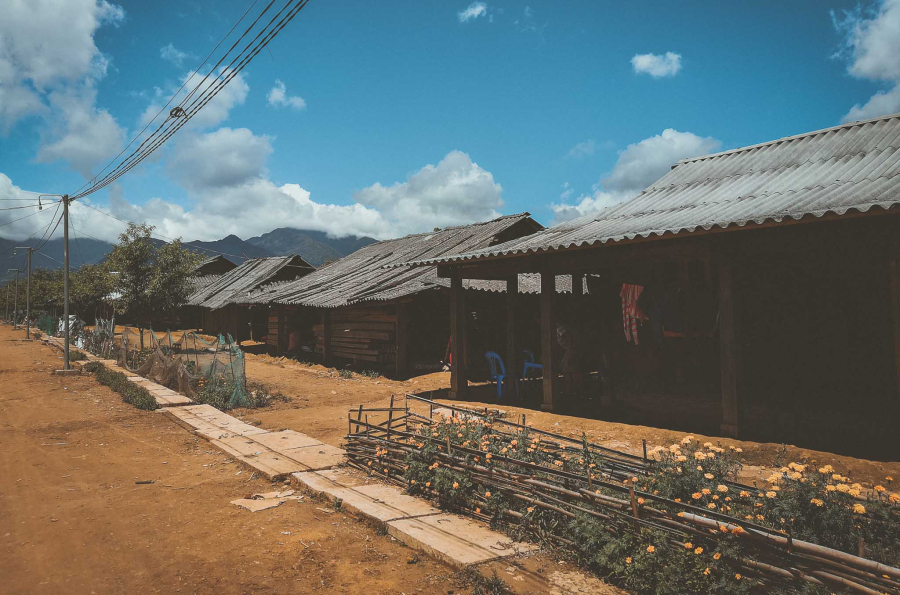Breathtaking scenery
Perched on a high mountain peak, Cu Vai village is covered in year-round mist. This makes it a heavenly retreat from the outside world for many visitors.
In Thai language, Cu Vai means “a strip of clouds across the sky”. The name partly reflects the poetic and ethereal nature of this small village. Cu Vai village has only a few dozen households, mostly belonging to the Mong ethnic group. The arrangement of houses in the village, combined with its secluded location, creates an interesting visual impression when viewed from above.

The houses are built close to each other, divided into two rows by a straight road in the middle. Some people compare Cu Vai to a piano with houses lined up like keys. Others see it as a guerrilla airbase with the runway being the only main road in the village, and the houses on either side being the orientation lights.
Visitors who come to Cu Vai in spring can admire the blooming peach and apricot blossoms throughout the village. In autumn, they can enjoy the golden “waves of rice” on the terraced fields. In winter, there is a chance to experience snowfall.
This place has a unique topography, surrounded by clouds and mountains all year round, which allows the local residents to avoid the smoke, noise, and hustle of urban life.

Challenging roads
The journey to Cu Vai village is not easy, as it is more than 1,000m above sea level. The road leading to the village is treacherous, with continuous winding slopes and rugged rocks. However, once successfully conquered, the rewards will be well worth it.
Standing in the middle of the village, surrounded by vast skies, one feels a refreshing shade of blue in their soul. The blue color of the clear sky, the blue color of the mountains and forests, the blue color of the distant terraced rice fields below the hills.

Simply walking along the long straight road that cuts through the village, observing the rustic wooden houses and wild peach trees appearing behind the doors, hearing the laughter and cheerful calls of children playing, accompanied by the sound of wind and distant bird songs, one’s soul naturally feels serene and unexpectedly peaceful.
Not only does Cu Vai offer a majestic beauty of the sky, clouds, and serene nature in Yen Bai, but it also provides moments of absolute tranquility that not every tourist destination can offer.

When planning to explore Cu Vai village, visitors should keep in mind that the ideal weather is during sunny days. Avoid going during the rainy season, as the roads become treacherous and difficult, reducing the opportunity to enjoy the magnificent scenery along the journey.

































